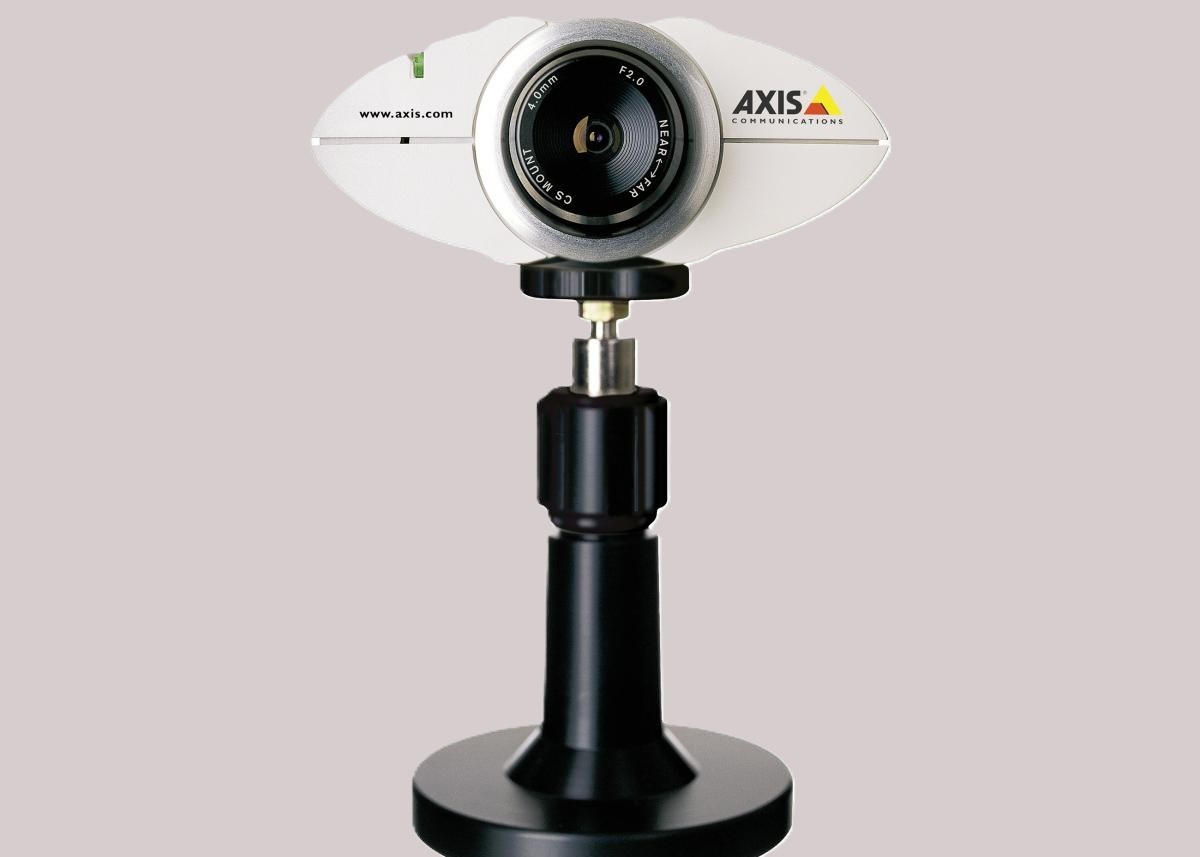Hardware
Networked camera set
for next evolution
Martin Gren, inventor of the IP camera, tells ARTHUR GOLDSTUCK what’s coming next.
It’s almost three decades since a bright spark had the idea of connecting video cameras directly to the Internet. A functionality that was initially dismissed as a toy, fully came into its own during the pandemic-driven boom in video-conferencing since 2020, and it continues to evolve to this day.
That bright spark was Martin Gren, an ebullient Swede who 40 years ago co-founded Axis Communications to connect printers to IBM mainframe computers. With the advent of the public Internet, and the arrival of Internet video software called CU-SeeMe, he wondered if video cameras could be connected in a similar way. He invented the IP camera, for Internet Protocol, using the existing IP standard as the layer on which new video standards were built.
An industry was born.
However, it took another decade before global standards were agreed around the technology. That gave Axis time to develop ancillary products like access control, and network audio devices for physical security and video surveillance. In 2015, Canon bought the company for US$2.83-billion, and allowed it to continue operating independently. It now employs 3,800 people in 50 countries.
This week, in a rare interview, Gren told Business Times that one of the early secrets of the company’s growth was a willingness to bet on the future.
“One of the first lessons was that, when we had launched the first IP camera, we found a lot of customers, but we also saw a lot of customers were still using analog cameras that they wanted to network-enable. Our second product, then, was obviously a video encoder.
“But when we exhibited for the first time at a security show in the United Kingdom, they said what type of technology is that? That’s a toy company. It has nothing to do with this trade show. We said great, here is an old analog market, but it’s bound to go digital one day. We were so happy to see that.”
The reason for being happy about a market that didn’t exist? It meant it was an open market for Axis, despite other players beginning to enter the market.
“People didn’t understand that IP technology was what enabled a lot more new applications,” says Gren. “They had Ethernet internet infrastructure, but coax cable was way too expensive to put it everywhere. In South Africa, you know how large the power plug is (for Ethernet infrastructure), it requires a certified electrician, and it has to have metal conduits around it. It’s super expensive. Being able to do it via IP was the main driver in the early days.”
The big breakthrough, he says, came in around 2007.
“That was when flat screen televisions began replacing the analog TV at home. We said okay, everyone in their homes will now have an HD (high-definition) or full HD or HD-ready TV, why not do the same on video surveillance? So, we started promoting Full HD security with the new resolution. After one year of introduction, 90% of our volume was full HD or HD-ready products. That was a quick shift, and probably one of the biggest moves in the CCTV industry.”
Milestones followed in quick succession, such as the 2012 introduction of Lightfinder technology, which allowed video surveillance cameras to see colour at night for the first time.
“Now that has, of course, been improved so many times. At Axis we follow Moore’s law, because we know that semiconductors keep on following Moore’s law (that transistor capacity will double every 18 months on the same space). And then you can extrapolate where you will be in a certain amount of time.”
Gren expects substantial consolidation in the coming years, due to the enormous cost of each new generation of camera.
“Say we are building a new building for a warehouse and about 600 staff, that new building cost as much as our latest chip in development cost. And the chip price goes up 30 to 50% every new generation, so not a lot of companies can afford to do those investments.
“There’s a big difference between a photographic camera and a security camera, for which most of our chips are made. With photographic cameras you care about colour accuracy, and typically look into the camera and smile. That is certainly not the use case for a video surveillance camera.”
One example of the shift in the design is the introduction of artificial intelligence.
“The majority of the chip is dedicated to neural networks for AI, which we use for all the fancy type of analytics. But we also use them in order to detect scenes, for instance to learn that is the area where it’s a person walking, so let’s not compress that person too hard. But here is a tree that’s swaying, we can compress it a little bit harder. We can fine tune the exposures to make sure it is ideal on the person, not on the scene overall. You can do that very intelligently based on AI.”
The next phase of the evolution of the technology, says Gren, is in IP audio.
“When you walk in a shopping mall or hotel, you see more speakers than you see cameras. And all the speakers you see are analog. And then you can ask yourself, are they able to remain analog for a long time? And what will be possible if it is going to be network enabled?
“I look at the statistics and sales and I can see that IP audio lags IP video by about 20 years. But one day it will be as big.”
* Arthur Goldstuck is CEO of World Wide Worx and editor-in-chief of Gadget.co.za. Follow him on social media on @art2gee.



















